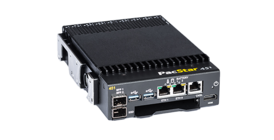
This paper will explain Hardware Security Modules (HSMs), the foundational security technologies they build upon, and why their use is critical for today’s secure networks in the data center and at the tactical edge.
Next, we will take a deeper dive into how security technology leader Yubico and their YubiHSM use HSMs to help deliver the required level of security in the smallest package available. Finally, we will look at some examples of how Curtiss-Wright implements HSMs to build secure networks at the tactical edge for the U.S. Military, our allies, and coalition partners. Digital keys are a key concept in the discussion of HSM and security technologies. Thinking about the physical keys we depend on every day can provide some useful examples of how digital keys are used. We all have “low-value” and “high-value” keys. Imagine a low-value key as a rarely used bicycle lock, whereas a high-value key might be the ignition key to your car. Next, imagine that someone could copy any of your keys in a fraction of a second without leaving any trace. For really high-value keys, it’s critical to put in place the best protection possible.
At this point, it is helpful to establish some related terminology. In symmetric cryptography, all parties have a copy of the same key. In asymmetric cryptography, different keys are used for locking and unlocking. The asymmetric cryptography (crypto) approach has many advantages, such as verifying exactly who sent a particular message.
The most common use for asymmetric crypto is in public key infrastructure (PKI) applications. For example, PKI is used to implement the little green lock icon in a web browser, and it’s also used for signing software installers to prove where the installer came from. Although both of these use cases are public, that’s not where the “public” in public key infrastructure comes from.


